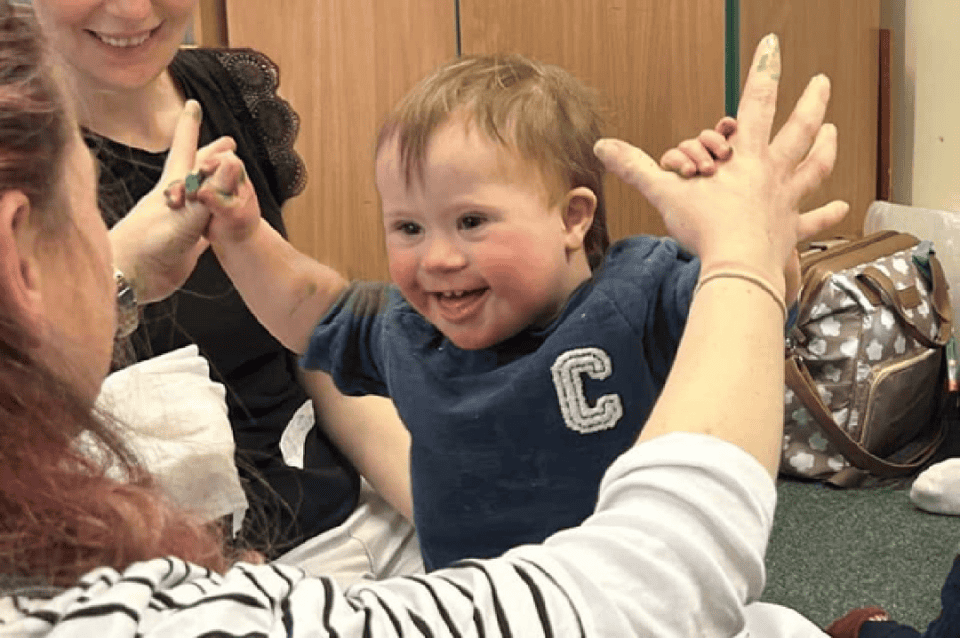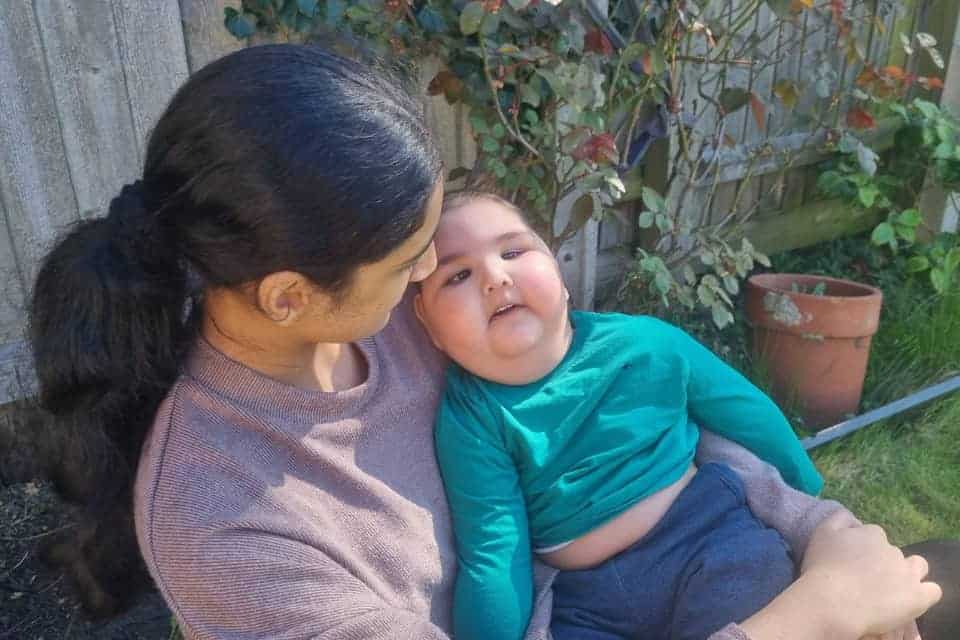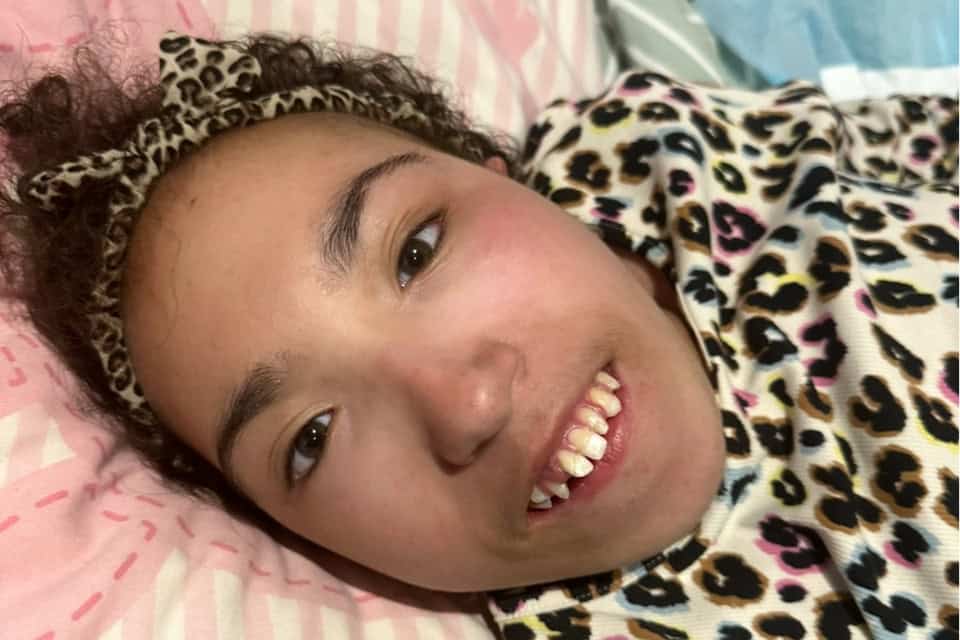Est. read time: 7-8 minutes.
George Radcliffe was a three-year-old boy with a fascination and thirst for life.
Happy, healthy and a joy to be around. He loved playing and exploring. He also enjoyed nursery and it was one of his favourite places to go.
“The world was a big adventure for George,” said mum Lisa.
“He was curious about everything and had incredible speech for his age.
“We didn’t really go through the ‘terrible twos’ phase because he was able to articulate himself and so good at understanding his and others’ emotions.”
Everything changed for George, dad David and Lisa in May 2022.
Out of nowhere, he woke one morning with a lump on the side of his head.
“It wasn’t red or sore and he didn’t seem bothered by it,” said Lisa, who lives near Ely.
“In fact, he didn’t know it was there unless he touched it or looked in a mirror.
“It baffled everyone and we were bounced between people who thought it was either caused by an infection or a cyst.
“I took him to minor injuries and then to see a doctor.
“Both sent me away but he didn’t want to play with his toys that day. He didn’t eat much and wasn’t himself.
“It was when he went to bed the following night that his temperature rose and he started to get restless.
“We phoned 111, saw an emergency doctor and they told us to go straight to A&E at Addenbrooke’s.
“The staff there were incredible. They worked quickly and arranged scans and a biopsy.
“We were told it would take a couple of weeks for the results to come back and then, three days later, on a Friday, we got a call to say they needed to see us at 9am on the Monday morning. At that point, we knew it was serious.”
Lisa and David were told it was a malignant tumour – Rhabdomyosarcoma – immediately hurling them into a “whirlwind of hospital life” and cancer terminology.
“Everything happened so quickly. There was no time to process what was happening around us,” said David.
“I liken it to being on a constant treadmill, because if you’re not in a meeting talking about your child, supporting them through treatment, surgery and other procedures, you’re by their side caring for them. There’s no time to pause.
“There was a particular gene within the tumour that made it high-risk.
“George was one of the first children known to have this gene, so soon after diagnosis. It was only newly learnt that it made the tumour high-risk of relapse.
“Nine rounds of intensive chemotherapy began and it shrunk the tumour enough for it to move away from his brain – so much so that he was able to have surgery at Great Ormond Street (in July 2022).
“Surgeons were confident they’d removed all of the tumour. However, after looking more closely at the tissue taken away, it was clear there may be residual disease (cancerous cells left behind).”
During surgery, George lost muscle around his jaw, which led to a locked jaw. He could still talk, beautifully, and push food between his teeth.
“However, everything else became more challenging. He needed a gastrostomy button to be fed properly, to ensure he got the calories he needed,” said Lisa.
“He then had six weeks of proton beam radiotherapy – a new type of radiotherapy treatment specifically for tumours of this type. This meant moving our lives to London for six weeks.
“For radiotherapy, George required general anaesthetic. A breathing tube wouldn’t fit in his mouth, because his jaw was locked, so he had to have a tracheostomy for safe access to his airways.
“I could have fallen over when they told me; we hadn’t expected it at all.
“It wasn’t on our radar. It then meant six weeks’ of parents’ training, while he stayed in hospital, as we learnt how to change his tapes and tube and provide daily observation and care. We were so thankful to eventually come home for Christmas, after George spent a total of three months across three hospitals.
“He then had a clear scan early last January, so we started the year full of hope. He was in remission and there was talk of the tracheostomy coming out.”
David and Lisa cared for George 24-7 between them, from January to March.
There was no capacity for their parents to be trained, so it was difficult for them to get much-needed respite – a situation that left them feeling lost and tired.
However, help was at hand from the team at East Anglia’s Children’s Hospices (EACH).
“EACH had been mentioned during a conversation about George’s tracheostomy,” said Lisa.
“Then a friend suggested we seek support from them so I went on the website and made a self-referral.
“At that point, I thought ‘what’s the worst that can happen? They can only say no’.
“However, I got a call saying we were eligible and a meeting was booked.
“Ironically, George’s tracheostomy came out days before we were due to visit Milton.
“I worried that might change things but we were still told to come. Thank goodness.
“Milton turned out to be George’s replacement for nursery. A place where he could play, without increasing the risk of infection, as his immune system was low.
“Right from the start, he knew we were going to a place where people could look after us, where he was going to have lots of fun and play.
“That turned out to be the case every time he went to Milton.
“I’d been so worried because, in my head, the word ‘hospice’ meant nothing more than end of life care. I thought why do we need to go there?
“However, as soon as you walk through the door, you realise it’s a magical place.
“George absolutely loved it and what made it perfect was that they quickly got to know us. They knew our story and we didn’t have to keep retelling it. The staff quickly loved George and he felt special on every visit.”
Things then took another turn for the worst.
Five months after his radiotherapy, George’s family were told the tumour was back and had grown significantly.
Relapse treatment options were “pretty poor” and the chances of anything being effective were slim. The tumour had grown by 25%, so all treatment options had been exhausted.
Hospital visits ended and the family were gently passed to the hospice, where George had a wonderful summer, making memories, which included fun sleepovers at EACH.
Sadly, George died at Milton in October 2023, with his mum, dad and EACH friends by his side.
“By that point, EACH had already become part of our family so the transition to end of life care was very smooth,” said David.
“Without that support, it would have been horrific.
“Even towards the end, when he was too tired to play, he didn’t want to be stuck in his bedroom.
“He wanted to be on the sofa on the care floor, looking through the doors and watching out for birds and squirrels.
“He loved being in a place where he could put his head up and say hello.
“Despite how poorly he was, he still wanted to be in that busy space around people. The priority for staff was George being comfortable and his wishes being met.
“He loved it. We’ve both got so many overwhelming memories or him being happy there, having an amazing time. EACH holds a special place in our hearts.
“We will forever be thankful for the joy they gave our George, how they wrapped our family in love, care and support during relapse and held our hands during his final days.”













